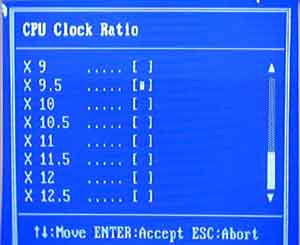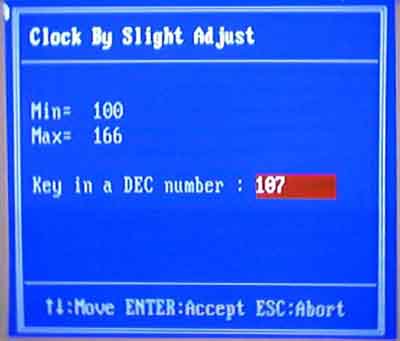Microstar K7T Pro2 KT133 Socket-A ATX
by Henry Kuo on October 16, 2000 12:00 PM EST- Posted in
- Motherboards

Multiplier overclocking is by far the easiest way to overclock your AMD Duron or Athlon for a few simple reasons. Most important is the fact that the KT133 chipset is currently unable to run the FSB above 110MHz while maintaining stability in the vast majority of cases. Unfortunately, most AMD processors that are currently available are “multiplier locked”, meaning that users are not able to change the multiplier easily. We put that in quotes because “unlocking” these CPU’s is as simple as reconnecting the L1 bridges on the processor. If you are interested in knowing how to unlock AMD processors and overclocking, please refer to our “AMD Thunderbird & Duron Overclocking Revealed” article.
Before the release of the K7T Pro2, the ASUS A7V, ABIT KT7-RAID, and the QDI KinetiZ 7T were the only three motherboards that allowed changing the multiplier of the processor. Not surprisingly, the ABIT and ASUS boards are two of the most popular boards among overclockers and we knew it would not be long before other motherboards manufacturers began releasing motherboards with multiplier settings. It is clear that the K7T Pro2 targets all those hardware enthusiasts, who want to have a motherboard that can push their AMD processors to the limit.
The K7T Pro2 is better than the ASUS A7V since the multiplier settings are all in BIOS like the ABIT KT7, so users will not have to play with any jumpers or dipswitches. Moreover, under the Frequency / Voltage Control panel you can also find the “Clock by Slight Adjustment” settings, where users can set the FSB anywhere between 100MHz and 166MHz in 1MHz increments. This can definitely help you squeeze out the last bit of performance from your processor if you are so inclined. As noted above, settings above 110 MHz are not particularly useful due to limitations of the KT133 chipset.

Microstar must have listened to all hardware enthusiasts about what they really want and need. Besides the FSB and multiplier settings, you can also adjust the CPU core voltage between 1.500 – 1.850Volts in 0.025Volts increments. This is absolutely a must for users who want to reach a CPU’s true limits. Microstar has also gone an extra mile and included a setting to change the I/O voltages of the motherboard between 3.3Volts and 3.45Volts. We have yet to see evidence that increasing I/O voltages helps, but it might come in handy later. Moreover, under the PC Health panel, users can find the temperatures of the CPU and the system, as well as the CPU fan and system fan speeds. It states the CPU core voltages, but it lacks information on the AGP voltages.
In order to illustrate how adjusting the multiplier can yield better overclocking, we performed a comparison between the K7T Pro and K7T Pro2. We use exactly the same set up, an AMD Thunderbird 800MHz OEM with a standard HSF, where the processor has its multiplier unlocked already. For the K7T Prothe highest FSB we got was just a merely 105MHz. Settings higher than that caused the system to become highly unstable. That makes the clock speed of the processor 840MHz (105MHz x 8.0 = 840MHz). When we put the same chip in the K7T Pro2 setup, we first stayed with 100MHz FSB and increase the multiplier. We were able to achieve a multiplier of 9.5 before the system lost its stability. We then tried to increase the FSB step by step, and we were able to hit 105MHz without losing too much stability. Therefore, the clock speed of that same Thunderbird CPU was 997.5MHz (105Mhz x 9.5 = 997.5MHz). Considering the fact that the same processor was used, this is a huge performance jump. Notice that in both case we did not increase the CPU core voltage or I/O voltage for fair comparison.










0 Comments
View All Comments